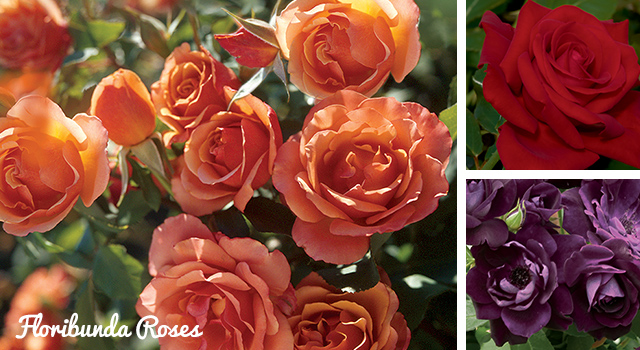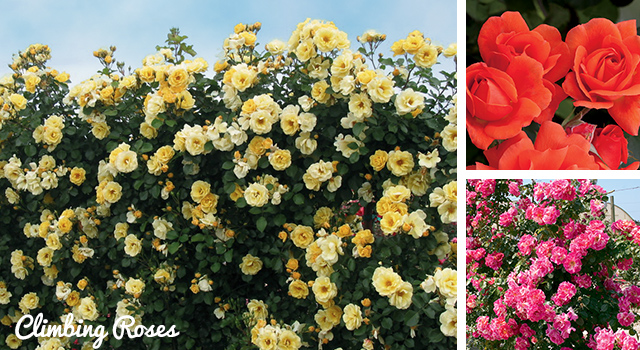Roses are one of the most loved flowers in the world, and are the most popular flower in the United States. Roses can take many forms; bushy, tall, miniature and can even climb fences. Roses are a popular choice for Valentine Day bouquets and many other special occasions. Roses are also popular garden plants, and it seems that there is a rose variety out there to be planted for nearly everyone.
Our friends at Holland Bulb Farms have decided to get into the rose business, and are offering 20 varieties of bare root rose plants for Spring of 2016. If you are not familiar with rose gardening but would like to learn more, we are going to break down the difference in some of the most popular types, as well as tips for proper planting of bare root roses.

Hybrid Tea Roses:
- Most popular type of rose
- Most commonly used rose in fresh cut flower bouquets
- One bloom per stem
- Large, fragrant and showy blooms up to 5” in diameter
- Hardy in zones 6-10. Winter protection with rose cones is suggested when planted in zones 4-6

Grandiflora Roses
- Flowers form in clusters on the stems
- Bloom repeatedly
- Large blooms similar in size to Hybrid Tea Roses

Floribunda Roses
- Bloom repeatedly
- Flowers bloom in clusters of 3-25 on the stems
- Blooms on old and new wood
- Bushy habit, tend to be more cold hardy
- Shorter stems than Grandiflora and Hybrid Tea roses

Climbing Roses
- Great for trellises, pergolas, and fences
- Climbing roses don’t attach themselves, and must be attached by the gardener with twine
General tips for growing happy healthy Roses
- Roses like sun light, make sure they are in a location that receives at least 6 hours of sunlight with good air circulation. Proper spacing is important
- Roses are prone to fungal leaf diseases; it is advisable to spray your roses with a fungicide a couple times a year to keep your roses looking healthy
- Removing the spent blooms (also known as deadheading) will encourage your roses to continue to produce blooms throughout the season


